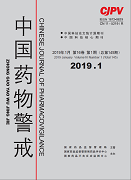|
|
Study on the Single Dose Toxicity and Local Toxicity of Technetium [99mTc] Pentetate Acid Injection
GAO Jie, ZHANG Wei, LI Mei, SUN Ge, HU Bo, WANG Ruoqi, JIN Hongtao, LI Jianguo
2019, 16(1):
18-22.
Objective To study the preclinical safety of technetium[99mTc] pentetate acid injection, so as to provide a reference for the safety study of radiopharmaceuticals. Methods ICR mice, New Zealand rabbits and guinea pigs were used respectively to carry out the single dose toxicity test of tail intravenous injection (control group, 5 550 MBq·kg-1 group and 925 MBq·kg-1 group), vein irritating test, muscle irritating test and active systemic anaphylaxis test. The general symptoms were observed, while the weight changes of the animals and the feed consumption were determined during tests. Histopathological examination was performed, in which hematological indexes were detected by single dose toxicity, gross anatomy examination was performed on dead animals and animals still alive after the end of observation period, thymus, spleen, kidney and testicles were extracted for weighing, and viscera coefficients were calculated. Results All the mice in the 5 550 MBq·kg-1 group had drooping eyelids and little movement after administration, and one male animal died about 10 min after administration. No obvious abnormality was found in animals in the 925 MBq·kg-1 group. Vein irritating, muscle irritating and active systemic anaphylaxis group showed no obvious abnormalities. Conclusion No obvious toxic reaction related to the drug was found under the conditions of this experiment, suggesting that it provides reference information for its clinical safe application.
References |
Related Articles |
Metrics
|
